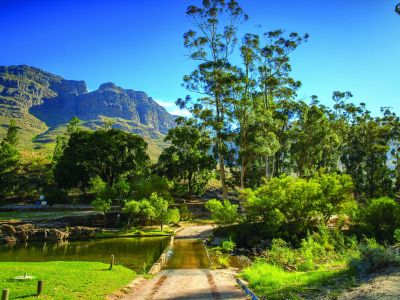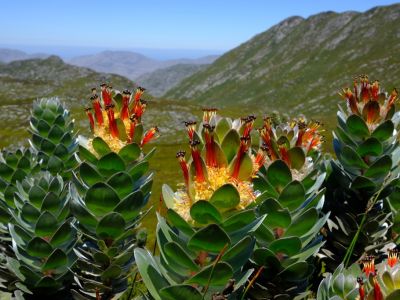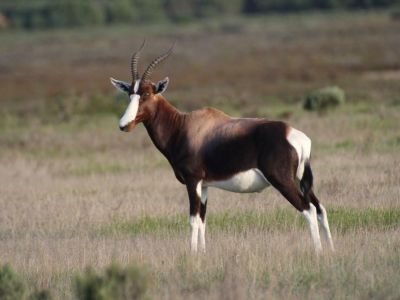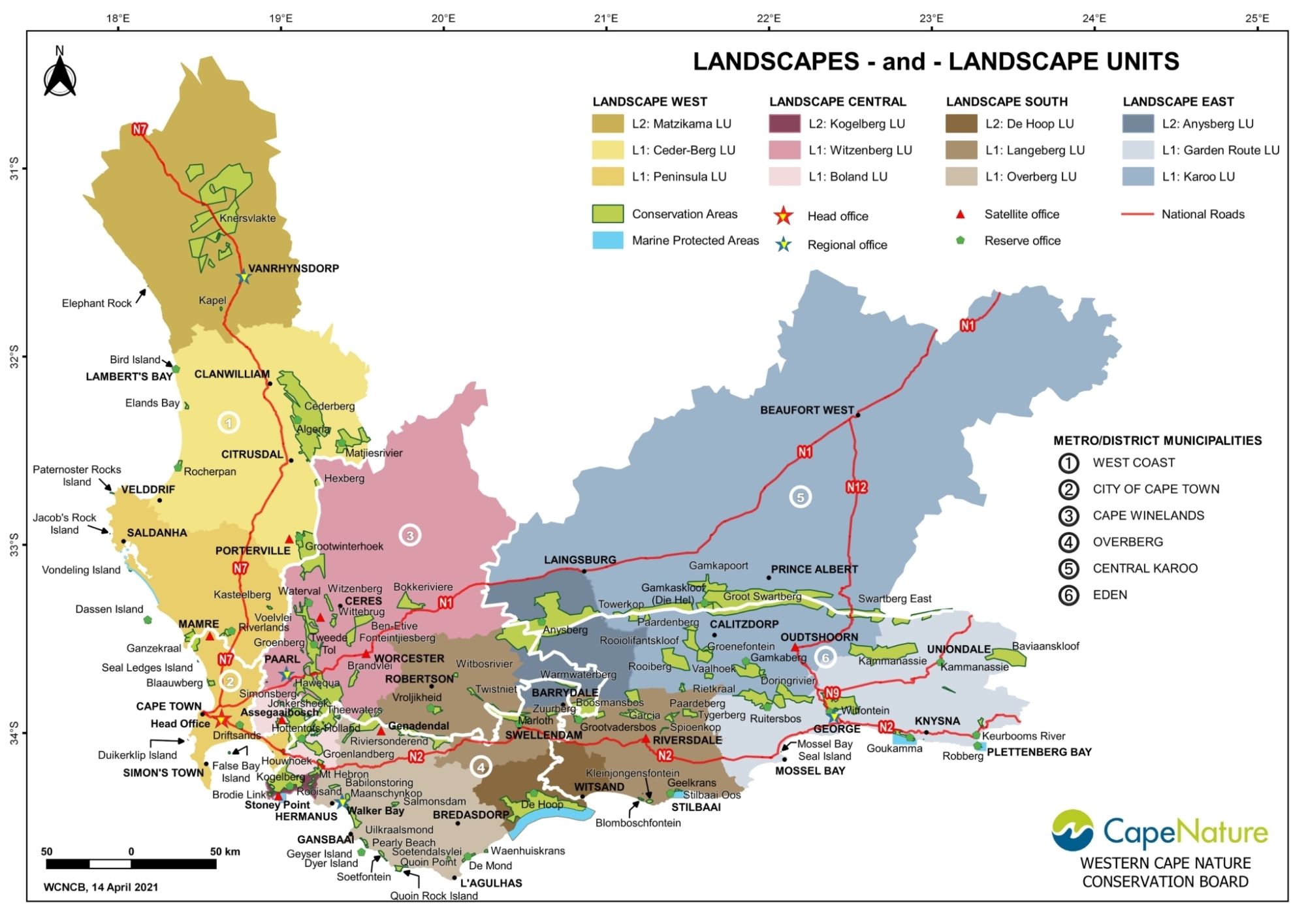Landscapes

Landscape West
Landscape West is diverse, comprising the City of Cape Town metropole and the West Coast District Municipality areas of jurisdiction, including the local municipalities of Swartland, Saldanha Bay, Bergrivier, Cederberg and Matzikama. Landscape West comprises marine and coastal habitats, lowlands, mountain catchment areas and arid landscapes such as the succulent Karoo. The landscape transitions from a densely populated urban environment in the south to a more rural landscape characterised by towns and villages, agricultural and natural areas towards the north and east.
Landscape Central
The vegetation of Landscape Central falls within the Core Cape Subregion (previously named the Cape Floristic Kingdom), which is the smallest of the world’s six floral kingdoms. It is internationally renowned for its especially rich flora, containing an estimated 9 383 species of vascular plants of which almost 69% are endemic (restricted to the region). This makes it one of the richest regions in the world in terms of botanical diversity, apart from some neotropical areas.
The remarkable floral diversity of this landscape is evident from the distribution patterns of a sample of 1 936 plant taxa from plant families and genera that are characteristic of the Cape flora, such as Proteaceae, Ericaceae, Restionaceae and Bruniaceae. The highest percentage occurrence of these taxa per quarter degree square (20% to 26%) is found in Landscape Central. The great diversity of plants is attributed to the change in complement of species along environmental gradients and the variation in species in the same habitat type from one geographical location to another.


Landscape South
Landscape South is a diverse landscape with mountainous topography in the north where towns such as Robertson, Montagu, Barrydale and Swellendam are located. The more northern area also consists of mountain ranges including the Langeberg Mountain Range with popular nature reserves such as Marloth Nature Reserve, Grootvadersbosch Nature Reserve. As part of Grootvadersbosch Nature Reserve, the World Heritage Convention, UNESCO (United Nations Educational, Scientific and Cultural Organisation), declared Boosmansbos Wilderness Area, a World Heritage Site in 2004 and extended in 2015 to include the entire Langeberg Complex as part of the Cape Floral Region Protected Areas World Heritage Site. The Langeberg Complex supports 19 vegetation types (Mucina & Rutherford 2011) of which two are critically endangered and four endangered (Jacobs et al. 2017)
Landscape East
Landscape East is the largest of the four CapeNature landscapes and is geographically and botanically very diverse. It stretches from the lush coastal Garden Route right through to the arid Karoo region of the Beaufort West area. CapeNature reserves in Landscape East include Anysberg, Gamkaberg, Swartberg, Outeniqua, Goukamma and Robberg Nature Reserves. Both Goukamma and Robberg are also Marine Protected Areas.
The area is botanically very diverse with beautiful orchids such as Disa hians (Lizard disa), being locally abundant in the Garden Route area. Some of the geophytes such as Gladiolus nigromontanus, are threatened and our nature reserves help toward their long term survival. The imposing Outeniqua mountains are a prominent feature and popular with hikers and photographers.

